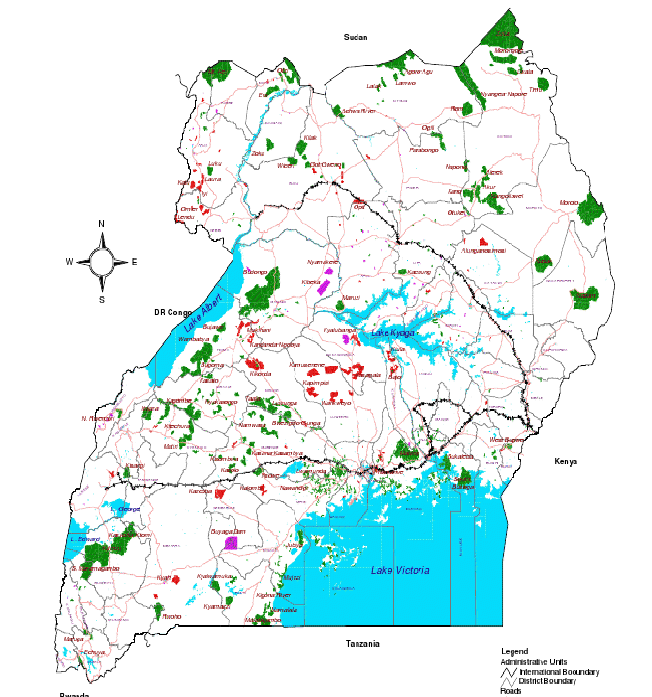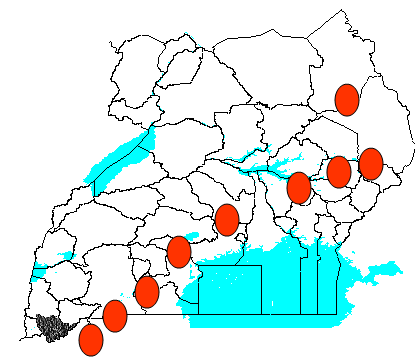Introduction
Human interaction with the natural environment has imposed diverse impacts on the natural resources, which has resulted to degradation and depletion of the biophysical surroundings, biodiversity and natural resources.
This poses the need for the implementation of effective policy regulations in order to address the negative influences that human activities impose on the natural resources such as water, air, soil and forests (Fimbel and Robinson 45).
Forests are a vital component of the ecosystem, and any human activity that results to its degradation imposes significant impacts on the overall functioning of the larger ecosystem. Recently, there have been increased concerns relating to the impacts of logging on the viability and sustainability of forest resources.
Illegal forest activities such as logging have imposed destructive influences of forests, and have resulted to noteworthy ecological and socio-economic impacts in countries where forests are a major natural resource.
Tropical forests are one of the most valuable ecosystems in the world; they are on the verge of their degradation and depletion due to human activities such as encroachment and logging (Turyahabwe 147). Biodiversity, plants and animals are most affected by the degradation of the forest resources.
In addition, forest degradation also imposes significant impacts on other natural resources such as soil and water. For instance, forest degradation results to increased soil erosion and degeneration, which in turn results to sedimentation in the water bodies, thus increasing the vulnerability of extinction of the water bodies.
From a global perspective, forest degradation imposes significant effects on the trends of changes in the global climate. The purpose of this paper is to evaluate the impacts of logging on the forest resources in Uganda and offer recommendations that can be used to mitigate and manage the identified impacts.
Logging in Uganda. Overview
Since 1990, the forest cover of Uganda has declined by 33 percent because of the increased need for farmlands, increasing human population and urbanization, which translates to an increased need for the forest resources such as timber and charcoal. An implication of this is that effective intervention strategies are needed to address the impacts of logging on the forest cover within Uganda.
According to a report released in 2009 by the National Environment Management Authority (NEMA), Uganda had at least 5 million hectares under forest cover during 1990, and by 2005, there were only 3.5 million hectares of forest cover remaining in the country.
This means that the forest resources in Uganda are declining at a rate of 2% per annum, which is currently the highest in the globe. According to estimates by NEMA, if deforestation in Uganda goes on at the present rate, the forests in the country will be completely depleted by 2050 (UNEP 148).
The primary reason for the forest depletion in Uganda is due to unchecked logging. The present forest coverage in Uganda is shown in the following figure 1
Figure 1: The present Forest Coverage in Uganda

Source: UNEP. Dead Planet, Living Planet: Biodiversity and Ecosystem Restoration for Sustainable… Nairobi, Kenya: United Nations Environment Programme, 2010.
Logging in Uganda can be divided into selective logging and clear-cut logging. Selecting logging mainly involves the harvesting of high-valued and commercial trees, leaving the trees that are of low value and not suitable for development of valuable forest products (UNEP 178).
Clear-cut logging on the other hand involves harvesting all the trees without selection of trees basing on their commercial value. In most cases, clear-cut logging is conducted for the main purpose of agricultural farming and land use. A common trend of logging in the context of Uganda is illegal logging, which is a booming trade in most parts of the country.
Illegal logging in Uganda has been facilitated by the personnel who have the convenience of doing so (Fimbel and Robinson 148). The case of illegal logging in Uganda is worsened by the fact that National Forest Authority creates a perception it lacks the capacity to address the challenges of forest destruction imposed by illegal logging.
In some documented areas, the NFA has disbursed licenses for logging to individual traders who have played a great deal in clearing forests for farm purposes. The following diagram shows the decline in forest area in Uganda and future projections.
Figure 2: Forest Area Per Capita in Uganda and future projections

Source: Turyahabwe, Tweheyo. “Does Forest Tenure Influence Forest Vegetation Characteristics? A Comparative Analysis of Private, Local and Central Government Forest Reserves in Central Ugandano access.” International Forestry Review (2010).
Socio-economic and biophysical impacts of logging on forest resources in Uganda
A significant proportion of the Ugandan population relies on forests and trees to different extents. In the country, it is estimated that timber saw logs are consumed at a rate of approximately 750,000 m3 per annum and a sustainable production rate of between 250,000 and 300,000 m3 (Turyahabwe 123).
The construction industry in Uganda, which has an annual growth rate of 10 %, is the main driver for the demand of logging. A significant percentage of timber logs access the market illegally, and this explains why Uganda has the highest rate of deforestation on a global perspective (Fimbel and Robinson 148).
Illegal logging also imposes significant ecological impacts in Uganda. The forest resource in the country hosts a wide range of biodiversity and forest tree species. The NFA reports that the forest in Uganda hosts about 315 mammal species, at least 1000 birds species and 1200 butterfly species.
In comparison from a global perspective, the Uganda forests hosts 11percent of the bird species and 7 percent of mammal species in the world. This implies a rich biodiversity that translates to increased tourist activity and economic value.
In addition, forests protect the water catchment areas, shores of water bodies and stability of steep slopes. This implies that logging imposes negative influences towards the sustainability of the ecosystem and other natural resources such as water, soil and air (UNEP 202). The following figure shows a map of Uganda depicting the dry land areas associated with logging.
Figure 3: a map of Uganda showing the location of dry land areas due to deforestation

Source: UNEP. Dead Planet, Living Planet: Biodiversity and Ecosystem Restoration for Sustainable… Nairobi, Kenya: United Nations Environment Programme, 2010.
Evaluation of Policies
Illegal logging in Uganda can be significantly attributed to poor forest governance practices in the country. Cases associated with an increase in illegal logging in Uganda is caused by high levels of corruption within the country’s forestry sector, political interference within the administration and management of forest resources, increased population urbanization and the changing viewpoints of the government regarding forestry (UNEP 147).
A weak interagency cooperation, insecurity and lack of sufficient capacity also play a role in increasing the extent of illegal clear-cut logging within the country. This section evaluates the effectiveness of the policies used by Uganda to address the problem associated with illegal logging (Turyahabwe 122).
Uganda has implemented laws that govern the aspect of land ownership and access to various natural resources. The Uganda’s forest policy was implemented with the main objective of enhancing governance and management of the forestry sector using partnerships that encourage transparency, efficiency and accountability within the stakeholders of the forestry sector.
The government policies for reducing mass destruction of forests allocate the responsibilities of forest management basing on responsibility (Turyahabwe 120). Generally, the forest policy has a goal of attaining sustainable socio-economic benefits from the forest resource in the country.
A provision of the forest policy in the country is the National Forestry and Tree Planting Act of 2003, which proposes a collaborative effort between the government and the public sector in forest management. In addition, the act serves to regulate forest activities associated with unchecked illegal logging and encroachment within the forest reserve.
The ineffectiveness of the forestry policy is Uganda can be attributed to policy inconsistencies, which is evident in the different positions of the government with regard to forestation in the country (UNEP 150). For instance, there is no precise law that governs the deployment of chain saws during the milling of timber, resulting into wastefulness.
In addition, the government is seeking to reform its functionalities with the principal objectives of addressing the national needs and enhance effective governance that results to rationalization (Derek and Nathaniel 1260). From a theoretical framework, this represent significant shifts regarding the role that the government has in the management and conservation of forest, lays emphasis on a facilitation role.
In practice however, the government responsibility in forest management has been distributed to the various government institutions that have conflicting interests and mandates. An outcome of this is a conflict between the institutions relating to the sectoral policies and the changing position of the government with regard to the forestry sector (Puts 1001).
The government also uses monitoring systems to address the issue of illegal logging. The country has established a timber monitoring system that keeps track of the timber from the forest to the vendor (Turyahabwe 121).
Forest products that are in transit should be from a documented source accompanied with the papers representing the legal requirements for such forest activities. Despite the refinement of the system to meet international standards, it has been effective in addressing cases of illegal logging due to the policy constraints and interference from the authorities that are supposed to regulate forest activities.
Alternative solutions and recommendations
The problems associated illegal logging in Uganda can be mainly attributed to ineffective policies with respect to forestry administration and management. In order to enhance the effectiveness of the policies, political support is needed in order to eliminate issues associated with political manipulation during policy implementation.
It is recommended that the government should offer an open and strong political support to the institutions associated with forest management and law enforcement. It is also recommended that a strong interagency cooperation and partnership can be helpful in combating illegal logging and ensuring that there are no cases associated with illegal logging in Uganda (UNEP 147).
Another potential solution to illegal logging in Uganda is to encourage private forestry. This can be initiated by encouraging tree planting on both private and public lands in order to reduce the pressure imposed on the natural forests. This is helpful in restoring degraded forests in the country (UNEP 151).
Conclusion
Illegal forest activities such as logging have imposed destructive influences of forests, and resulted to significant ecological and socio-economic impacts in countries where forests are a main natural resource.
Tropical rainforests are one of the most valuable ecosystems in the world; they are on the verge of their degradation and depletion due to human activities such as encroachment and logging. Illegal logging in Uganda can be considerably attributed to poor forest governance practices in the country.
Cases associated with an increase in illegal logging in Uganda is caused by increased corruption within the country’s forestry sector, political interference within the administration and management of forest resources, increased population urbanization and the changing viewpoints of the government regarding forestry.
A weak interagency cooperation, insecurity and lack of sufficient capacity also play a role in increasing the extent of illegal clear-cut logging within the country.
Works Cited
Derek, Pomeroy and Seavy Nathaniel. “An Overview of History and Development of Forest Policy and Legislation in Ugandano access.” International Forestry Review (2008): 1259-1269. Print.
Fimbel, Robert and John Robinson. The cutting edge: conserving wildlife in logged tropical forest. Columbia: Columbia University Press, 2001. Print.
Puts, Sist. “Reduced-impact logging: Challenges and Opportunities.” Forest Ecology & Management (2008): 998-1002. Print.
Turyahabwe, Tweheyo. “Does Forest Tenure Influence Forest Vegetation Characteristics? A Comparative Analysis of Private, Local and Central Government Forest Reserves in Central Ugandano access.” International Forestry Review (2010): 120-133. Print.
UNEP. Dead Planet, Living Planet: Biodiversity and Ecosystem Restoration for Sustainable… Nairobi, Kenya: United Nations Environment Programme, 2010. Print.